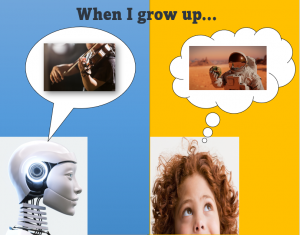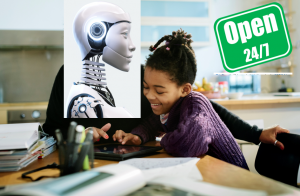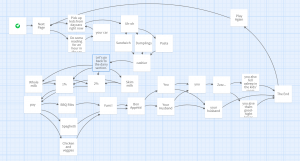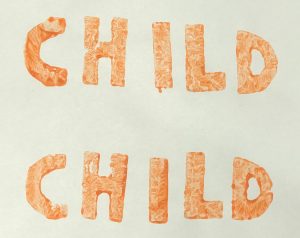Linking #1: Task 1 What’s in your bag? by Mandy Alves
https://blogs.ubc.ca/alvesetec540/2021/09/09/task-1-whats-in-your-bag/
As I am also a mom of three girls, I could easily relate to the contents in Mandy’s bag (who is also a mother of two daughters). We both have some similar items, such as kid’s snacks, toys, and allergy medications.
I really liked how she presented her bag items in the picture by labelling each item with text. They were easy to identify and her reflection with the Bitmojis made reading more pleasant.
In her reflection she mentioned that she uses emoticons in her written texts to insert her feelings and this reminded me of myself proofreading important text messages multiple times before sending them to avoid misunderstanding by the recipients. These days people communicate by emails and instant text messages more often rather than talking on the phone or in person. Communication through written texts is convenient but it can easily bring misinterpretation and miscommunication because text cannot accurately convey tones, emotions, facial expressions, gestures, body language, or eye contact. In that sense I appreciate the invention or development of emoticons ! 😉
Linking #2: Task 4 Potato Printing by Delian
https://blogs.ubc.ca/etec540delian/2021/10/03/task-4-potato-printing/
We both chose to do potato printing instead of manual scripts. The difficulty of carving the letters was a bit higher for Delian as her word has more letters with curves and holes. Still, the steps for making stamps were similar for both of us. We both had a challenge with the extra moisture on the open surface of the potatoes. We both overcome that challenge in different ways: Delian used an acrylic paint instead of water-based paint and I dried the surface to control the extra moisture but used a water-based paint. From the picture of her potato printing, I can see that she also used a towel under the paper when stamping.
We both appreciated the development of the letter press system in mechanization of writing and the convenience of writing technology that we have today.
I agree with the argument in Delian’s reflection that “hand”-writing changed human cognition as when I do any writing assignments, my thinking process works better when jotting down ideas and reading what’s written on paper. But I have also experienced a flow of thoughts and ideas while typing words into the keyboard and then on the computer screen. Maybe the hand-brain connection could be explained with the hypothesis of the movement of hands and fingers improving brain activity and its performance.
Linking #3: Task 6 Emoji Story by Kirn Bhela
https://blogs.ubc.ca/etec540bhela/2021/10/12/task-6-an-emoji-story/
At first, I thought the first symbol was to describe that it was based on a book or an essay as I assumed that her emoji story would be in the similar format as mine (an emoji for the type of story whether it is a book, a tv series, or a movie and then more emoji(s) to describe the title of the story). To write this reflection I re-visited Kirn’s post and realized that she actually did mention that her emoji story is based on a movie she recently watched in the introduction above the vemoji story.
After several unsuccessful attempts of decoding the arrays of emojis to figure out the name of the movie (which I did not know it was a movie at that time), I started reading others’ responses below the post and I realized that the very first emoji was for the title of the movie, “Notebook” which is one of my favorite movies all time! Even though I could not guess the title of the “story” on my own, the plot of the story was easy to follow and understand.
In Kirn’s reflection she said that she examined her emoji keyboard and realized that the number of emojis for love and happiness far outnumbers any other emotions or expressions. I think that’s a great observation and I can also see that there are so many emoticons with heart(s) in various colours to represent love and affection
We both talked about the convenience of using emojis to communicate with people who do not share common languages or who do not have similar literacy competency. For Kirn, it was for her parents whose native language is not English; for me it was my 7-year-old daughter with limited English vocabs.
Linking #4: Task 7 Mode Bending by Stephanie Carr
https://blogs.ubc.ca/etec540scarr/2021/10/23/task-7-mode-bending/
I really liked the idea of using a song to deliver the content of this task. Without looking at the picture of her bag items I was able to visualize how her daily life would look like with the bag items. It felt like I was watching a short video of her typical day.
Songs are fun and I find that they are interestingly easy to deliver “challenging” stuff in learning. For instance, I learned to memorize the multiplication table by singing or chanting the multiples when I was young, and they are stuck in my memory forever because of that experience. Another simple example is young children learning alphabets by singing. I am sure that if we go search online, there are tons of songs created by someone to help them or others remember challenging and complex ideas.
A very important point Stephanie mentioned in her reflection is to be able to reach students in diverse levels and modes of learning through multimodality. I also agree that learning or presenting learning experience through different modes (verbal, visual, auditory…) is crucial for our students with diverse learning needs. Providing students with multiple modes/options/choices (multimodality) to express their thoughts, learning experience, and knowledge is so important, just like we have been in this course.
Linking #5: Task 8 Golden Record Curation by G. Ellen Reid
https://blogs.ubc.ca/ereid/intergalactic-golden-record/
Grace and I had somewhat similar criteria in curating the 10 tracks. Mine were being pleasant to listen and representing diverse cultures of humans on Earth; Grace’s were communicating human experience to aliens and evoking emotion and movement.
Our criteria are personal and subjective; however, surprisingly there were 6 tracks in common in both of our curations. I really like the image that she added at the end of her post; it sums up the criteria and the rationale behind her choices.
Linking #6: Task 9 Network Assignment Using Golden Record Curation Quiz Data by Anu Thale
While my focus of examining the representation of the data was to figure out logical or mathematical reasons to formation of such communities, Anu’s focus was finding examples where we can find connectivism and interconnected communities in our lives.
I remember that I had a hard time understanding the rationale of this task and I tried to understand the data and articulate my findings logically and mathematically. I did not think about applying my findings from the given data into real life examples as she has done in her reflection. I really appreciate her examples, such as food webs and circle of life.
We both recognized the lack of reasons for selecting 10 tracks in the data representation by Palladio.






